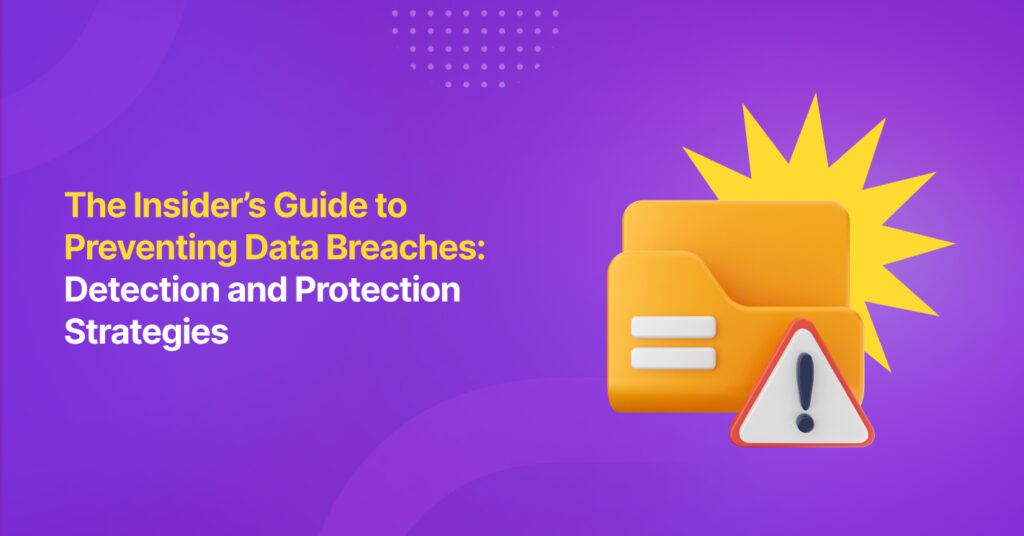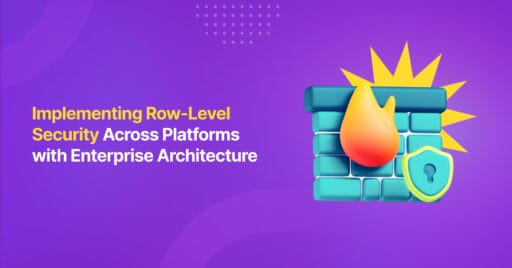Introduction
Data breaches happen when sensitive information that is confidential and protected lands on a person who is not authorized to view it. In an era where data is the lifeblood of enterprises, the threat of data breaches looms larger than ever before. The repercussions of these breaches can be catastrophic, leading to financial losses, damaged reputation, and legal consequences. As data breaches continue to rise, it’s important for organizations to adopt proactive strategies for detection and protection to safeguard their valuable assets and ensure business continuity.
Understanding Data Breaches
Data breaches occur when unauthorized individuals gain access to sensitive information, such as customer data, intellectual property, or financial records. The impact of these data breaches can be profound, resulting in financial losses, erosion of customer trust, and regulatory fines. With the proliferation of digital technologies and interconnected systems, enterprises face an escalating threat landscape, making robust prevention strategies indispensable.
Detection Strategies
Detection is at the forefront of defense against data breaches. Intrusion Detection Systems (IDS) and Intrusion Prevention Systems (IPS) act as guardians, continuously monitoring network traffic for suspicious activity.
According to IBM (International Business Machine Corporation), Intrusion Detection System (IDS) is a network security tool that keeps an eye on network traffic and devices, looking out for any recognized malicious behavior, suspicious actions, or breaches of security policies.
The Intrusion Prevention Systems (IPS), on the other hand, watch over network traffic, identify possible threats, and take action, such as notifying the security team, ending risky connections, deleting harmful content, or activating other security measures.
Real-time alerts and automated responses are crucial for an effective detection strategy, enabling swift action to prevent potential threats. Additionally, specialized software tailored to detect phishing attempts plays a pivotal role in fortifying defenses against one of the most prevalent attack vectors.
Mitrais offers robust solutions for the Data Breach detection system, ensuring proactive data protection against malicious outsider or malicious insider. Learn more about it here.
Expanded Detection Solutions
According to a report by the Ponemon Institute published by IBM Security, initial attack methods targeting data theft vary, therefore the solutions to prevent them must be multifaceted:
- Stolen or Compromised Credentials: Behavior-based detection such as in Extended Detection and Response (XDR), IPS/IDS, threat intelligence, and zero trust models.
- Phishing: Email protection, endpoint protection, and email/browser isolation.
- Breach of Third-Party Software: XDR, patch management, vulnerability management, and endpoint protection.
- Malicious Insider: Data Loss Protection (DLP) and XDR.
- Accidental Data Loss: DLP.
- Cloud Misconfiguration: Cloud and Workload Protection.
- Physical Security Compromise: Firewalls.
Protection Strategies
Beyond detection, robust protection mechanisms are essential for safeguarding sensitive data. Encryption, access controls, and network segmentation form the bedrock of data security, rendering stolen information unintelligible to unauthorized parties. Developing a comprehensive information security policy provides a blueprint for mitigating risks and promoting a culture of security awareness within the organization.
Furthermore, investing in employee training and awareness programs empowers personnel to recognize and respond effectively to potential threats.
Additional Protection Recommendations
The Ponemon Institute report highlights the following recommendations to help minimize the impacts of data breaches:
- Implement a zero-trust security framework to prevent unauthorized access to confidential information.
- Safeguard sensitive data in cloud environments by using robust policies and encryption techniques.
- Allocate resources to security orchestration, Extended Detection and Response (XDR), and automation and response systems (SOAR) to enhance detection and response efficiency.
- Utilize technologies that secure and oversee endpoints and remote workers.
- Develop and regularly test incident response plans to boost cyber resilience.
Challenges and Considerations
- Complex IT Infrastructure
Navigating the labyrinth of modern IT infrastructure poses a significant challenge for enterprises. Complex networks, encompassing cloud services, third-party integrations, and remote access tools, create myriad entry points for attackers.
- Insider Threats
Implementing stringent access controls and conducting regular audits are critical strategies to mitigate insider threats, safeguarding against malicious actors operating within the organization.
- Compliance with Data Protection Regulations
Compliance with data protection regulations necessitates not only technical solutions but also robust data governance frameworks to ensure adherence to legal requirements.
Conclusion
Preventing data breaches requires a multifaceted approach encompassing detection, protection, and ongoing vigilance. By implementing proactive strategies and embracing a culture of security, organizations can strengthen their defenses against evolving threats and mitigate the risk of costly breaches. As a trusted partner in cybersecurity, Mitrais stands ready to provide expert guidance and cutting-edge solutions to help organizations safeguard their valuable assets.
Ready to empower your defenses against data breaches?
Visit our Cybersecurity page to explore a range of services and products designed to protect your organization from evolving threats.
Don’t wait until it’s too late—protect your enterprise with Mitrais.






